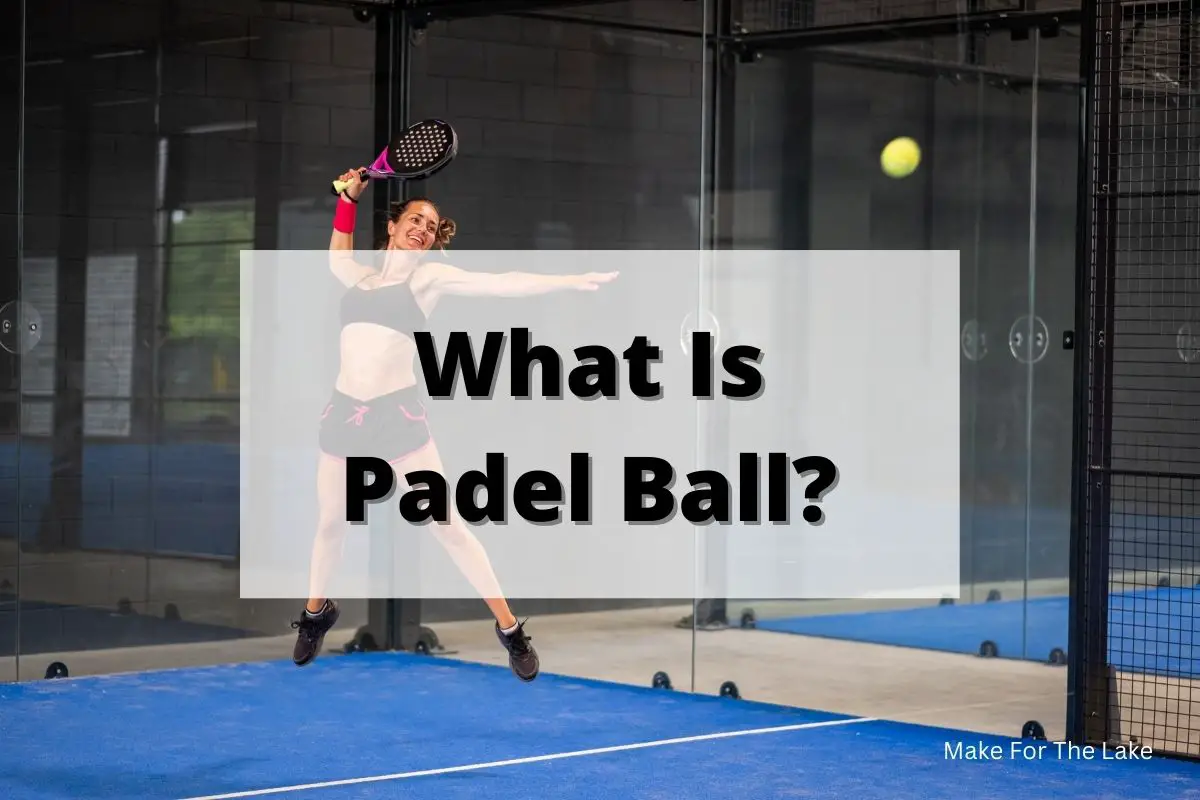Disclosure: This post contains affiliate links, meaning that we earn a commission if you purchase a product or service through our exclusive links at no cost to you. For more details, please read our full disclosure.
Padel ball, also known as padel tennis, is a fast-paced and exciting sport that is growing in popularity all around the world. It is a combination of tennis and squash, played on a smaller court with solid walls and a lower net. The game is played with a paddle and a particular ball that has a lower pressure than a regular tennis ball, which makes it easier to control and play more delicate shots.
Padel is a social and inclusive sport that can be played by people of all ages and skill levels, making it a great way to stay active and have fun with friends and family. Whether you’re a seasoned athlete or just looking for a new way to stay active and have fun, padel ball is a sport that you should definitely try.
Where Is Padel Tennis Played?
Padel ball is a sport that has gained a lot of popularity in recent years, and it can be played in many places all around the world. In Europe, padel is extremely popular, especially in Spain, where it was invented. Padel courts can be found in nearly every city and town in Spain, and the sport is played by people of all ages and skill levels.
Padel is also gaining popularity in other parts of the world, including South America, where it is considered one of the most popular sports after soccer. In the United States and Canada, padel is still a relatively new sport, but it is rapidly growing in popularity, with new courts being built in many cities across North America.
Whether you’re looking to play padel competitively or just for fun, you can find a court near you and start playing this exciting sport.
What are the Rules of Padel?
Padel ball is a sport that is easy to learn but challenging to master. Here are some basic rules to keep in mind when playing padel:
- The court: Padel is played on a court that is smaller than a tennis court, with walls around the perimeter. The court measures 10 meters wide by 20 meters long, with a net in the middle.
- Scoring: Padel uses the same scoring system as tennis, with points awarded for each rally won. The first team to reach six games with a two-game lead wins the set. Matches are typically played as best of three sets.
- Serving: The server must stand behind the baseline and serve the ball diagonally into the opposite service box. The ball must bounce on the server’s side of the court and then hit the wall or be returned by the receiving team.
- Return: The receiving team must let the ball bounce on their side before returning it. After the ball has bounced, it can be hit directly or off the wall.
- Volley: Players can hit the ball in the air without letting it bounce on the ground, known as a volley. However, the ball must still hit the wall before it goes over the net.
- Ball in or out: If the ball hits the net and lands in the correct service box, the serve is considered good. If the ball hits the wall or goes out of bounds, the point is awarded to the opposing team.
Remember, these are just the basic rules of padel, and there are many more nuances to the game. But with a bit of practice and some friendly competition, you’ll soon be on your way to mastering this exciting and dynamic sport.
Padel vs. squash
Padel ball and squash are both racket sports that share some similarities but are also quite different from one another. The most significant difference between the two sports is the court. Padel is played on a smaller court with solid walls and a lower net, while squash is played on a larger court with no walls and a higher net.
Padel also uses a particular ball that is easier to control and play more delicate shots, while squash uses a small, high-bouncing ball that requires more precision and skill to play. Another key difference is the scoring system, with padel using the same scoring system as tennis and squash using a point-a-rally system.
While both sports require agility, speed, and racquet skills, padel is generally considered to be more accessible and easier to learn for beginners, while squash is seen as a more challenging and demanding sport that requires a high level of fitness and skill. Ultimately, the choice between padel and squash comes down to personal preference, but both sports offer an exciting and engaging way to stay active and have fun.
Padel vs. Tennis
Padel ball and tennis are, again, both racket sports, but there are some key differences between the two. The most significant difference is the court. Padel is played on a smaller court with walls, while tennis is played on a larger court without walls. The padel court is also wider but shorter than a tennis court. Another significant difference is the equipment used.
Padel uses a solid paddle, while tennis uses a strung racket. The ball used in padel is also different, with a lower pressure and softer feel compared to a tennis ball, which makes it easier to control and play more delicate shots. The scoring system is also slightly different, with padel using a point-a-rally system and tennis using a more complex system that includes games, sets, and tiebreakers.
Both sports require speed, agility, and hand-eye coordination, but padel is generally considered to be easier to learn and more accessible for beginners. Overall, both sports offer unique challenges and excitement, and the choice between padel and tennis comes down to preference and individual skill levels.
Padel racket
A padel racket is a key piece of equipment used in the sport of padel. Unlike squash and tennis rackets, padel rackets have a solid surface made of fiberglass or carbon fiber, with small holes or perforations to reduce wind resistance and improve maneuverability.
The shape of a padel racket is also unique, with a round head and a shorter handle than a tennis racket. This design allows for greater control and precision when hitting the ball, as well as easier maneuverability in the tight spaces of a padel court. Additionally, padel rackets are generally lighter and more maneuverable than squash or tennis rackets, making them easier to handle for beginners and more experienced players alike.
Overall, the unique design and construction of padel rackets make them an essential piece of equipment for players of all skill levels who want to improve their game and enjoy the fast-paced and exciting sport of padel.
Link to our post on the best Adidas padel rackets for more information.
Padel balls
Padel balls are an essential component of the sport of padel and are specifically designed to meet the unique demands of the game. Unlike tennis balls, which are made of rubber and have a high bounce, padel balls are made of foam and have a lower bounce.
This lower bounce allows for greater control and precision when hitting the ball, making it easier to play a wider range of shots and angles on the smaller court with walls. Padel balls are also softer than tennis balls, which allows for a more gentle impact and helps reduce the risk of injury.
The size and weight of padel balls are also regulated to ensure consistency and fairness in competition. Overall, the design and construction of padel balls are essential for the success of the game and help to make it a unique and exciting sport that is enjoyed by players of all skill levels.
Padel court
The padel ball court is an essential component of the sport and is specifically designed to meet the unique demands of the game. Unlike tennis or squash courts, padel courts have solid walls that are an integral part of the game. The walls allow for the ball to be played off them, making for some exciting and unpredictable rallies.
The court is also smaller than a tennis court but larger than a squash court, with dimensions of 10 meters by 20 meters. The playing surface is sometimes made of artificial grass or artificial turf, which provides good traction and allows for quick and easy movements on the court. The net is lower than a tennis net but higher than a squash net and is positioned in the middle of the court, dividing it into two equal halves.
The unique design and features of the padel ball court make it an exciting and engaging place to play, with plenty of opportunities for fast-paced and skillful play. Overall, the padel court is an essential element of the sport and helps to make it a unique and exciting experience for players and spectators alike.
Final Thoughts
In conclusion, padel ball is a fast-paced, exciting sport that combines elements of tennis and squash. With a smaller court, solid walls, and low-bouncing balls, padel ball requires skill, precision, and agility to play. The sport has gained popularity around the world in recent years and is enjoyed by players of all ages and skill levels.
Whether you’re looking to improve your fitness, challenge yourself mentally and physically, or just have fun with friends, padel ball offers something for everyone. So why not give it a try? With its unique rules, equipment, and court design, padel ball is a thrilling and engaging sport that is sure to leave you coming back for more.



